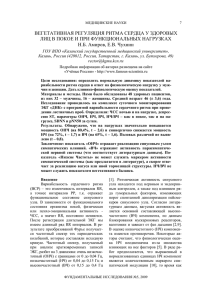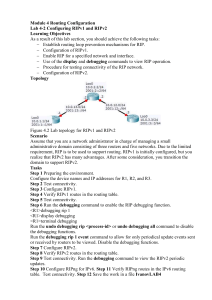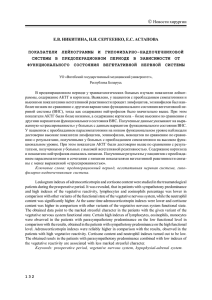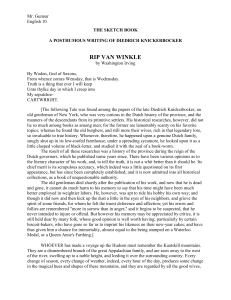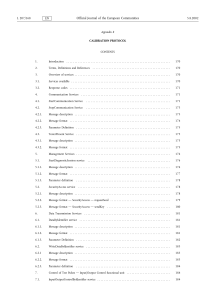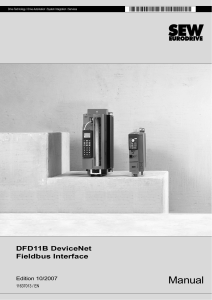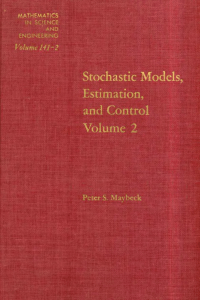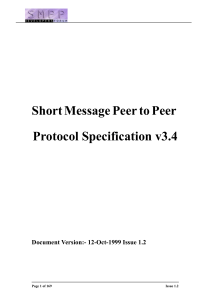., . « »
реклама
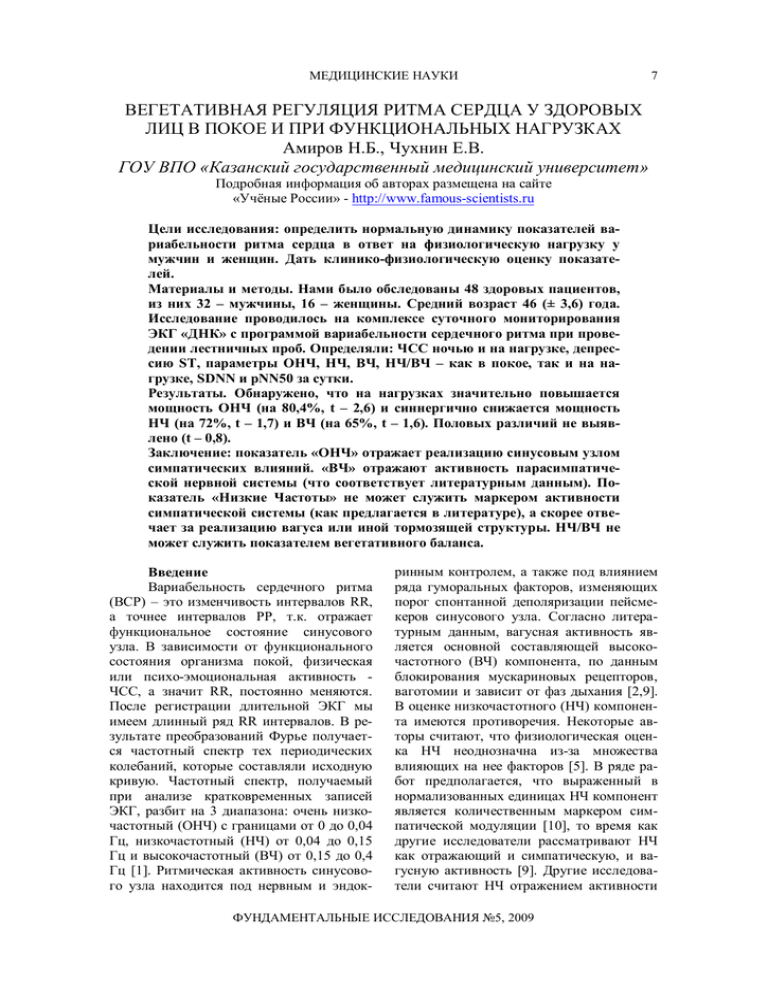
7 ., . « » » - http://www.famous-scientists.ru : - . - . . , 16 – 32 – « 48 . , . 46 (± 3,6) » . ST, , SDNN . : , , . pNN50 , - , – , , ( 80,4%, t – 2,6) ( 72%, t – 1,7) ( 65%, t – 1,6). (t – 0,8). : « » . « » ( « » ( - ). ), - . . , , )– RR, , . - . , . , , ( ) , . RR, ) , [2,9]. - [5]. - ( RR . - . , , . , , ( , [1]. 3 ) : 0 ( ) 0,04 ( ) 0,15 , 0,04 0,15 0,4 - [10], , [9]. 5, 2009 - 8 , [1,2]. ( - ( ) ), ( ). , 3, 5, 9 [7], . - . Ex el-2002. . [6], [8], 1. RR (SDNN). – [4]. « ») - ( [8]. , - [1]. ( >0,05) [3]. , - . – , , . 48 32 – . , 16 – 46 (± 3,6) . « , , , , , SDNN : ST, – pNN50 » , . - - - (n – 32) ( , , 2, 1, 2). – 42%, – 77,0%, 83,3%. t-2,1. – 23,5%, - 7,2 %, 69,4%. t-1,3. – 27,0 %, – 9,9 %, 63,4%. t-1,2. – 35%, – 16%, – 18%. - 1,7, - 1,4. pH50 – 4,6. 2. c (n – 16) ( 3, 4). – 50%, – 83,8%, 67,6%. t-1,5. – 24%, - 5,7 %, 76,3%. t-1,0. – 23,2 %, – 7,3 %, 68,6%. t-0,9. – 33%, – 19%, – 16%. - 1,8, - 1,3. pH50 – 5,3. 3. ( ) (n - 48) ( 5, 6). – 46%, – 80,4%, 74,7%. t-2,6. – 23,8%, - 6,5%, 72,6%. t-1,7. – 25,1%, – 8,6%, 65,8%. t-1,6. – 34%, – 17,5%, – 17%. SDNN , – 148. pH50 – 5. 5, 2009 9 1. 50,0 42,0 40,0 23,5 30,0 27,0 % 20,0 10,0 0,0 1 42,0 23,5 27,0 2. 77,0 80,0 60,0 % 40,0 7,2 20,0 0,0 9,9 1 77,0 7,2 9,9 5, 2009 10 3. 50,0 50,0 40,0 30,0 24,0 23,2 5,7 7,3 % 20,0 10,0 0,0 1 50,0 24,0 23,2 4. 100,0 83,8 80,0 60,0 % 40,0 20,0 0,0 1 83,8 5,7 7,3 5, 2009 11 5. 46,0 50,0 40,0 30,0 23,8 25,1 6,5 8,6 % 20,0 10,0 0,0 1 46,0 23,8 25,1 6. 80,4 90,0 80,0 70,0 60,0 % 50,0 40,0 30,0 20,0 10,0 0,0 1 80,4 6,5 8,6 5, 2009 12 1. 1 2 3 4 5 6 7 8 10 11 12 - 54,3 146,4 110,8 42 77 83,3 2,1 23,5 7,2 69,4 1,3 53,6 139 104,6 50 83,8 67,6 1,5 24 5,7 76,3 1,0 54,0 142,7 107,7 46 80,4 74,7 2,6 23,8 6,5 72,6 1,7 - 27 9,9 63,4 1,2 23,2 7,3 68,6 0,9 25,1 8,6 65,8 1,6 35,0 16,0 18,0 1,7 1,4 147,6 4,6 33 19 16 1,8 1,3 150 5,3 34 17 170 1,7 1,3 148 5,0 % % (%) (t) % % % (%) (t) 14 15 16 17 % % % (%). (t). 19 21 23 25 26 27 28 (%). (%) (%) SDNN pNN50 1) , , « » . ( ) ( ). 80,4% (t – 2,6) ( ), 72,6% (t – 1,7) . , – 65,8% (t – 1,6) - ). « » ( ), . - . - . SDNN – 148. , (t - 0,8). SDNN , . : ( ) – 1. . - 1,7, - 1,3, - . , . – . 5, 2009 - 13 // . 1995 . .11. 2. . « » 1998, « », 3. ., . 4. -N31 5. . / : ; 6. .: ., ., - 7. 4, 2000. . . . 64. . . 37-40. ., 8, 2003. . . 15/04/2003, ., . . - . , 1998. -196 . ., ., , . - // . - ., 1996. - 48 . 8. . . ., . . 2001. . . 9. Akselrod S, Gordon D, Ubel FA et al.Power spectrum analysis of heart rate fluctuation: a quantitative probe of beat to beat cardiovascular control.Science 1981: 213: 220-2. 10. Malliani A, Pagani M, Lombardi F, Cerutti S.Cardiovascular neural regulation explored in the frequency domain.Circulation 1991; 84: 1482-92. VEGETATIVE REGULATION OF A RHYTHM OF HEART AT THE HEALTHY PERSONS IN REST AND AT FUNCTIONAL LOADS Amirov N.B., Chukhnin Ye.V. Kazan state medical university The purposes of research: to define normal dynamics of parameters of heart rate variability in reply to a physiological load at the men and women. To give a clinic-physiological estimation of parameters. Materials and methods. We were surveyed 48 healthy patients, from them 32 - man, 16 woman. Average age 46 (±3,6) year. The research was spent on a complex of a daily monitoring a ECG " " with the program heart rate variability at realization of scalene assays. Determined: the heart rate at the night and on a load, depression ST, parameters VLF,LF, HF, LF/HF - both in rest, and on a load, SDNN and pNN50 for one day. Results. It is revealed, that on loads capacity (on 80,4 % considerably raises, t - 2,6) and synnergically the capacity (on 72 %, t - 1,7) and (on 65 %, t - 1,6) is reduced. Sexual differences is not revealed (t - 0,8). The conclusion: the parameter "VLF" reflects realization by sinus node of sympathetic influences. "HF" reflect activity of the parasympathetic nervous system (that corresponds to the literary data). The parameter «Low Frequencie» can not serve a marker of activity of sympathetic system (as it is offered in the literature), and faster answers for realization of vagus or other braking frame. LH/HL can not serve a parameter of vegetative balance. 5, 2009
